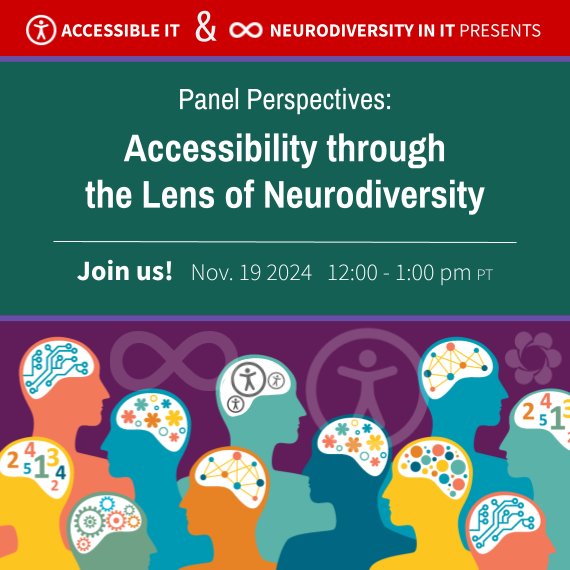
Digital accessibility practices have traditionally focused on technical standards, such as the Web Content Accessibility Guidelines (WCAG), and making interfaces accessible for those with sensory or physical disabilities, such as blindness and low-vision, hearing, or mobility impairments. While such standards offer an excellent starting point, it is still possible for common user interface designs to result in a less than ideal user experience for individuals with diverse cognitive and sensory processing styles. Whether designing and developing innovative user interfaces or publishing electronic documents, appreciating the intersection of accessibility practices and neurodiversity can lead to more effective communications and user experiences.
Join us for a panel presentation with Stanford staff who are neurodivergent to examine various design and content authoring practices and how this impacts individuals with cognitive and learning disabilities.
By contrasting good design with bad design, the discussion will explore the end-user experience, acknowledging that individuals process information differently and may have varied preferences and appreciations for certain design elements. The conversation will not only reflect the collective experiences of the presenters but also offer valuable takeaways when creating future digital content.
This event is co-hosted by Accessible IT and Neurodiversity in IT.

